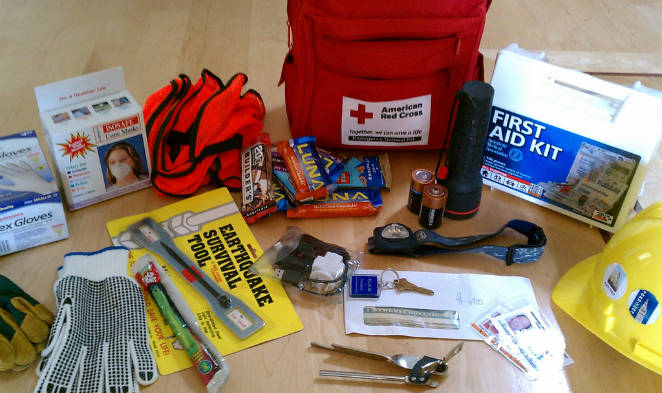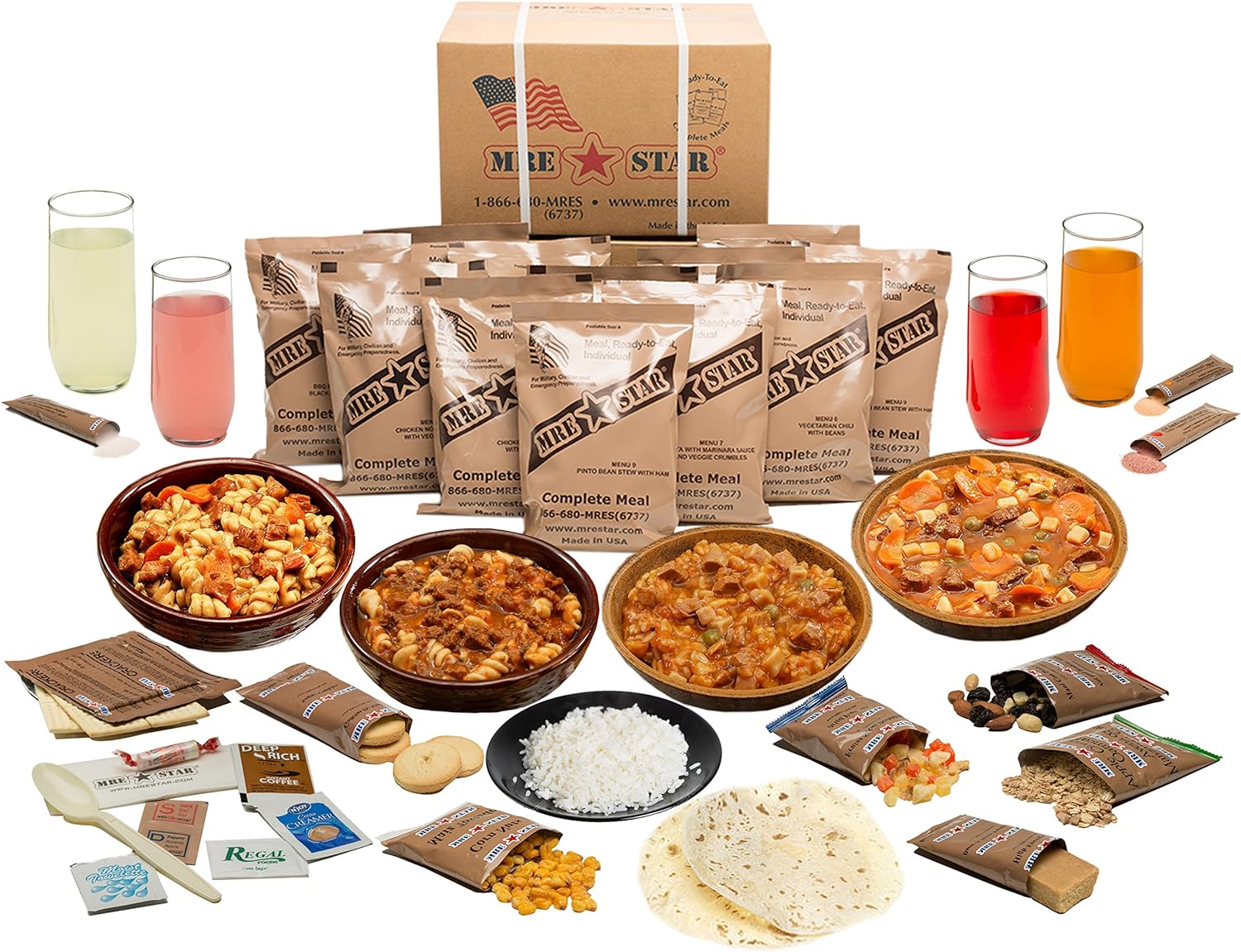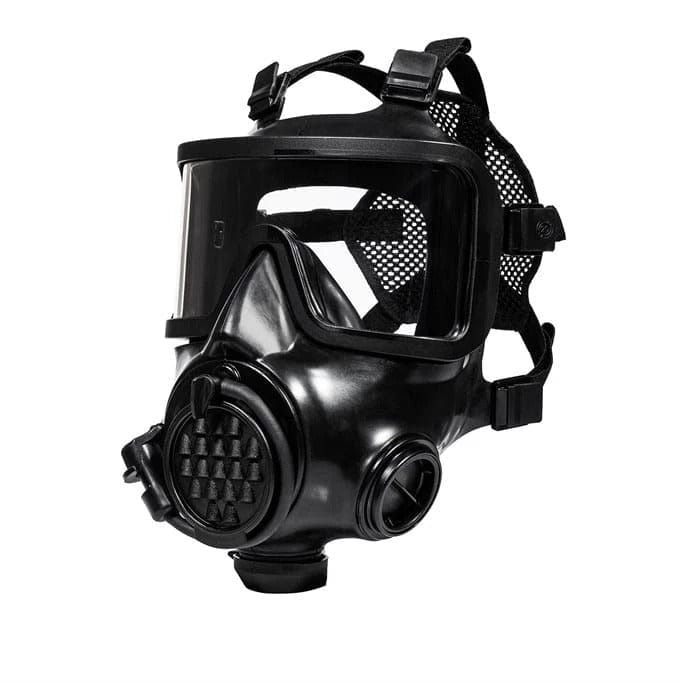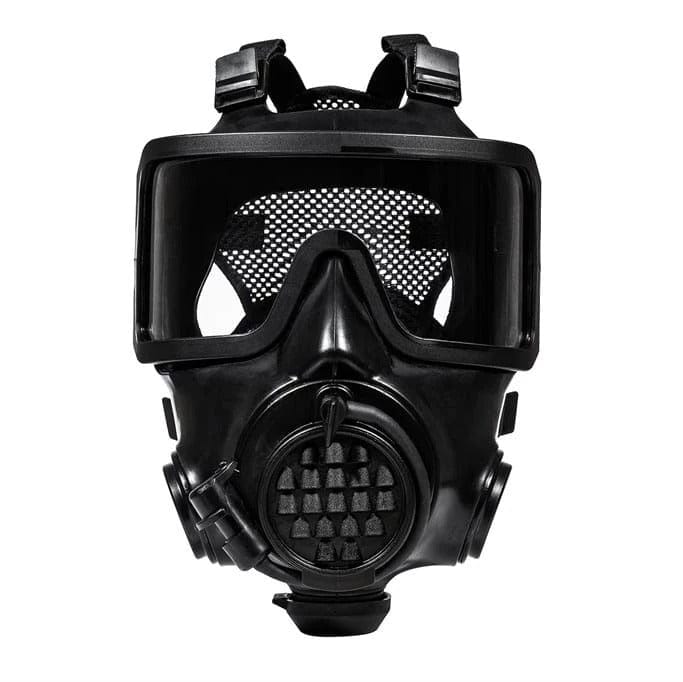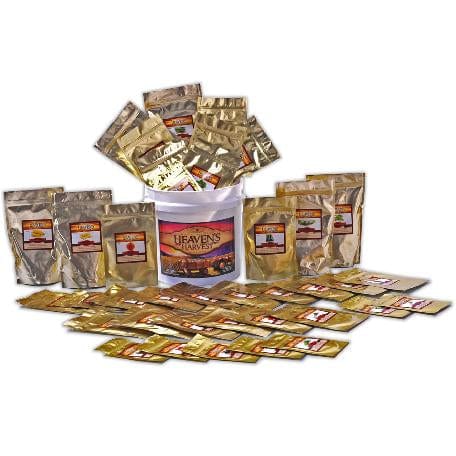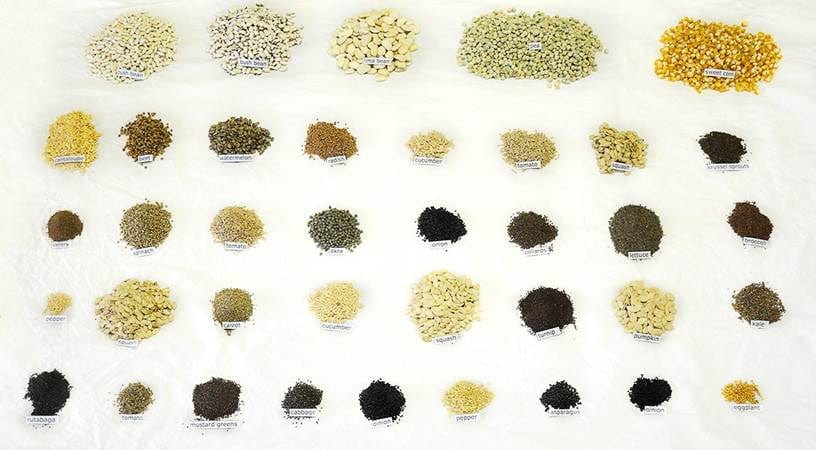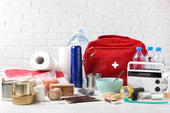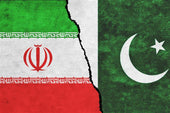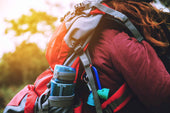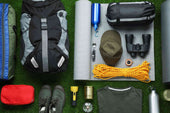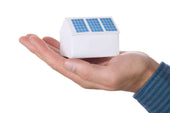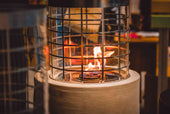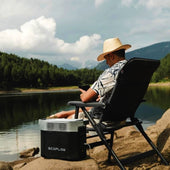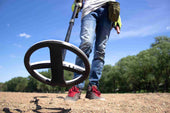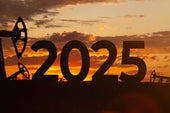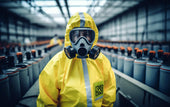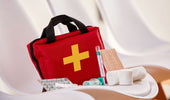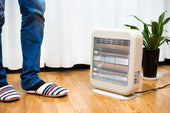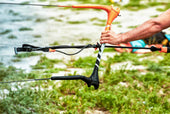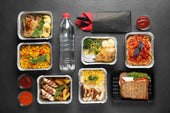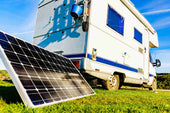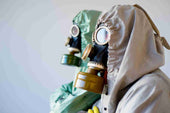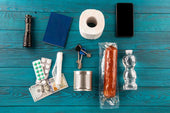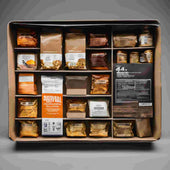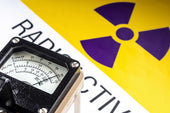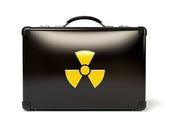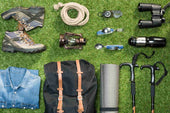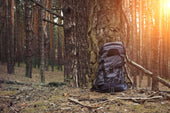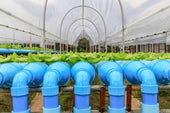Disasters, whether natural or man-made, give tremendous challenges to communities worldwide. They can devastate people's lives and disturb the environment and the economy.
Governments are leading in managing disasters, but individual preparation might be equally effective. First-line preparation for any emergency is the key to surviving and adapting to the situation.
Understanding Disasters and Their Impact
Disasters often affect citizens, their livelihoods, and the natural environment of entire communities, resulting in casualties, property destruction, and economic distress.
There are two types of catastrophes, each having their cause and effect.

Natural Disasters
These are catastrophic factors controlled by Earth's natural processes. The immense powers of nature, which can lead to extensive damage, are known to take a high toll on lives, communities, and nature.
The natural forces include:
- Earthquakes,
- Hurricanes,
- Floods,
- Wildfires,
- Tsunamis
Human-Made Disasters
Human-made disasters, which by other names are anthropogenic, have their causes in human deficiencies.
These disasters often occur because basic safety precautions are not followed, the environment is poorly managed, or deliberate actions that irrevocably destroy the integrity of the community and the environment are being taken.
These human actions or negligence include:
- Industrial accidents
- Oil spills,
- Nuclear explosions,
- Terrorist attacks
Secondary Disasters
While the effects of disasters are discussed, less is discussed, but a critical part of the disaster trend is the availability of secondary disasters, especially in underdeveloped countries.
In this way, Secondary disasters are initiated by primary disasters, aggravating the consequences and making recovery more difficult.
Examples
Man-made disasters can aggravate the impact of natural disasters, ending in complex emergencies.
Take, for instance, earthquakes that enter the premise, causing not only structural damage but also, in the end, other catastrophic issues such as chemical spills, landslides, tsunamis, a nuclear meltdown, or the collapse of dams, which can flood lands, making the situation much worse.
Furthermore, man-made disasters like pollution of water sources by oil spills can be long-term ones while also contaminating ecosystem structures that require years to regain the previous condition.
Below, we combine useful tips and skills to ensure you and your dear ones are safe from emergencies.
The focus is on concrete actions that can be implemented during and even after the event to mitigate the consequences and fast-track the response.
These strategies stress readiness, flexibility, and international cooperation to enhance safety and ensure a quick return to normal life during disasters.
Prepare Water for Disasters
Effective emergency water preparation methods are key to ensuring security and being self-reliant under extreme conditions. Every section recommends simple steps to purify, store, and purify water to avoid the risk of water scarcity during a disaster.

Storing Water
During crises and disasters, maintaining a consistent supply of clean, potable water is necessary for survival. Water management includes proper availability, appropriate storage, and maintenance to mitigate water crises before they occur.
Building Your Supply:
- Budget Allocation: You must create a free portion of the monthly budget for water storage. This approach entails a gradual accumulation of sufficient stock that is not financially draining.
- Quantity Guidelines: The recommended storage is as much as 1 gallon of water per person daily, just to get by. The minimum for a family of four is 120 gallons per month, and the consumption of this water should consider both drinking and sanitation needs (30 days).
- Diversify Your Sources: Stock your emergency supply with bottled water and food-grade plastic containers filled with tap water. These are cost-effective alternatives.
Proper Storage:
- Ideal Conditions: Keep water in a stable, cold, or hot environment. It is best to choose temperatures between 50°F and 70°F. Away from direct sunlight, the underground, whether basements or cellars, may be an alternative water storage method as cellars are perfect for keeping the water safe.
- Container Choice: Avoid using disposable plastics; opt for durable food-grade water buckets. Do not pack in containers that previously held milk or juice, as this can promote bacteria growth. Ensure the lids are secure and tightly locked to prevent contamination.
- Space Optimization: Put the water on the side, away from the floor, or up from the possible ground moisture or flooding. Due to space issues, it might be better to use space-efficient stackable containers.
Maintenance:
- Regular Checks: Every six months, conduct checkups of your water supplies for damage and signs of pollution. Check for murkiness or abnormal smell. When you notice those signs, the water should be replaced.
- Rotation Plan: Develop a FIFO (first in, first out) system to monitor your water supply. The oldest water stored, used only for watering plants or washing purposes, must be replenished with fresh supplies so that the water cycle inside your container can function normally.
- Emergency Purification Knowledge: Water safety is a critical concern, so familiarize yourself with different water purification strategies, such as boiling, chemical treatment, and filtering using a portable device. It is good practice to be well aware of this, as you may find the stored water polluted and, therefore, have to clean it up before you use it.
Purifying Water
Water treatment is characterized by several reliable processes that can overcome the problem of removal of contaminants and pathogens.
If the need for water arises due to unpredictable water sources that took effect after the disaster or if an event of this magnitude occurs in the future, it is very important to understand how to purify the water.

Boiling
Boiling water with average temperatures above 212F (100C) is one of the easiest and most effective ways of water purification. Here are some helpful tips for boiling water:
- Duration: After reaching the boiling point, you must keep the water boiling for at least 1 minute to eradicate the bacteria, viruses, and parasites. At altitudes above 5,000 feet, boil for 3 minutes since the boiling point of water is lower at such altitudes.
- Cooling: Let the boiled water cool naturally until it is cool enough to use it. For better taste, put some air back into the water by pouring it back and forth between two clean containers.
- Storage: Afterward, boil thoroughly and store the water in bottles that have been freshly cleaned and disinfected. Make sure the containers have tightly closed lids so that the water is protected from contamination again.
Filtration
Water filtration refers to the process of washing out the contaminants by using a simple filter. Here are some helpful tips for water filters:
- Filter Types: Determine what filter model ensures it meets the Guide Standard and Protocol for Testing Microbiological Water Purifiers. This will allow the removal of bacteria, viruses, and protozoa.
- Maintenance: Replace and wash filters whenever manufacturers direct to ensure their full purpose.
- Post-Filtration Care: Filtration completes this step, and the water should then be stored in clean, sealed containers to prevent the water from being polluted again.
Alternative Purification Methods
Beyond boiling and filtration, consider these methods for ensuring your water is safe to drink:
Chemical Disinfection: Eight drops of bleach per gallon of water (5-6 % Sodium hypochlorite) will effectively disinfect water. Stir and set aside for half an hour before use.
- Solar Disinfection (SODIS): Solar Disinfection(SODIS): The disinfection process occurs in clear plastic bottles filled with water that should stay at least six hours under direct sunlight. Sunlight helps UV rays neutralize most pathogens.
- Distillation: Of the most effective ways of purification, distillation stands out, as it takes water to boil, converts it to steam, and then condenses it into a clean, separate container. By doing so, microbes, chemicals, and dissolved salts get removed.
Ensuring Safety and Quality
The critical aspect of the emergency water supply is its safety. It must be sufficient in terms of quality for health and survival situations.
Regular storage and maintenance approaches can considerably eliminate contamination and provide access to harmless drinking water during emergencies.
This section presents major strategies to clean the emergency water supply.
- Regular Rotation: To prevent your water from going stale and to ensure you can use it regularly, schedule a time to replace it every six months. Among the numerous outstanding tasks is continually replacing old water with new supplies to guard against waterborne pathogens, even in emergencies.
- Appropriate Containers: Identifying appropriate storage for keeping your water pollutants-free is important. Use a food-safe water storage container with a secure, leak-proof fitting and other features suitable for maintaining water quality over a certain period.
- Clean Storage Areas: Your emerging water quality will be highly dependent on where you are storing, whether directly as exposure to sunlight, heat, or contamination from the outside. It is essential to maintain an individual’s hygiene and prevent any pests from being introduced into the water, which may cause contamination, as well as not storing water close to harmful chemicals that might seep into the supply. Frequently monitoring and draining those areas is important to ensure the purity of the water you consume.
Practicing these essential steps, including rotation, proper storage containers, and maintaining cleanliness, will allow for greater safety and quality of your emergency water supply. This way, you will be technically sure of a reliable supply of pure but safe drinking water that can be used for any emergency, hence, the safety and health of you and your family members.
Store Food for Emergencies
Effective food storage and safety must be two pillars of emergency preparedness so that individuals and families will have a sustainable source of nutritious and safe food during crises.
Properly selected and stored, good-quality food can serve as important resources during humanitarian emergencies or disasters when there is disruption to regular food supply chains.
This guide highlights the essence of food supply contingency planning, selection, and maintenance that is fit to endure the dangers of emergencies.

Storing Emergency Food
The choice of the right type of food is as significant as the means used to ensure its storage during a crisis.
This section focuses on two main points: the best-choice food supply for stockpiling and its shelf-life in an emergency.
Opt for Non-Perishable Food Items
- Long Shelf Life: To keep your supply fresh for a long time, opt for food formulated for long-term storage, such as Meals Ready to Eat (MREs), canned foods, and freeze-dried meals.
- Minimal Preparation: Emphasize things that can be stored for long or don’t require much cooking, spare fuel, and resources during emergencies.
- Dietary Considerations: It is important to have foods that cater to the dietary restrictions or preferences within the home, and this ensures that everyone gets the needed nutrition despite the stressful situations that the family might be experiencing.
Ensuring Safety and Quality
The safety and quality of your stored food are maintained by careful selection and very detailed storage methods.
- Vacuum sealing is one of the most effective methods of retaining the freshness of dry goods. It eliminates the air that can cause spoilage.
- First-in, First-Out (FIFO): To keep these supplies organized, use the most available products first and rotate your stock to maintain fresh stock.
- Temperature and Sunlight: Keep your food away from the deterioration of quality by always storing it in good conditions such as cool, dry, and dark.
- Oxygen absorbers prevent the oxidation of stored bulk goods like grains and legumes and preserve their quality over time.
Practical Examples
The adequate application of food storage practices in real-life situations is necessary to keep your food safe, high-quality, and long-lasting.
The practical examples below will guide you in using certain storage methods and tools to ensure your food resources are safe, fit for consumption, and last long. These techniques emphasize the need to be wise and methodical about what you have and how you store it.
Grain Storage
- Airtight Containers: Using air-tight containers to shield grains from humidity and pests is a better option. The shelf life of foods preserved in vacuum packs is also extended by adding oxygen absorbers, which remove oxygen and can cause spoilage.
Mylar Bags.
- Vacuum Sealing: Mylar bags are a great storage option for foods such as dried fruits, nuts, and snacks. Combined with vacuum packaging, they offer an almost unbreakable barrier against air, moisture, and light. When combined, the three water droplets can tell the weather, which is the key factor in food degradation.
Tracking System
- Expiration Management: Develop a system to update expiration dates. Recording what comes out of the freezer or marking containers with dates reinforces the procedure of using up older items first and maintaining freshness and safety.
Canned Goods Rotation
- Regular Check and Rotate: Make sure the cans have their expiry dates regularly checked and replaced by the less susceptible ones to spoilage and rancidity. Consequently, it allows the foods to be used when they are still in their perfect taste and decreases waste.
Bulk Food Packaging
- Proper Packaging for Bulk Items: Appropriate packaging should be used for bulk items like rice, beans, and flour. To avoid the risk of spoilage, use large, food-grade buckets with tightly fitted lids, oxygen absorbers, or desiccants to manage moisture and dry-store foods.
Utilizing Freezer Space
- Freezing for Longevity: Frozen storage would be a good way to prolong the life of perishable foods. Use vacuum-seal bags to pack meats, vegetables, and even cooked dishes, keeping them fresh for an extended time.
A thoughtfully designed food storage plan is important to emergency readiness. Focusing on non-perishable items, using proper storage and preservation techniques, and considering dietary needs can create a complete emergency food store that will be enough for any situation.
These approaches help individuals cope with the short-term challenges caused by crises and strengthen their ability to endure such emergencies in the future.
Health and Medical Preparedness
Health and medical preparedness are key to overall emergency preparedness.
To deal with medical conditions in such a situation, when professional assistance may not be available quickly, one should have enough supplies and knowledge. This involves handling minor injuries that may have occurred and managing chronic disease under difficult circumstances.
This holistic approach protects the entire family's health during disasters or emergencies.

Stocking Essential Medications
Having a stock of prescribed medicines is the most important step in staying healthy while facing dangerous situations. It guarantees that family members get their medication doses without the need to visit pharmacies, which they may not have access to.
- Assemble a List of Necessary Medications: Ensure that both over-the-counter and prescription drugs for the whole family are included, allowing for chronic conditions and common problems.
- Regularly Check Expiration Dates: Make sure the medicines are within the expiration date range and change them if necessary to maintain a stable potency level.
- Plan for Allergies: In case of an allergic reaction, administer antihistamines and epinephrine auto-injectors.
- Pain Management: To reduce pain and fever, keep pain relievers such as acetaminophen, ibuprofen, and Aspirin at home.
- Digestive Health: Add antacids, anti-diarrheal medication, and some laxatives in the first aid kit so that you can treat many digestive problems as they arise.
- Cold and Flu Remedies: Make sure you have easily available over-the-counter medications such as decongestants, cough suppressants, etc., and some throat lozenges to treat symptoms of colds and flu.
First Aid Kit Essentials
A first-aid kit is invaluable to any emergency preparedness plan. It contains all the tools and equipment necessary to implement the requisite measures to deal with situations ranging from minor injuries to life-threatening conditions until expert help is secured.
- Ensure Your First Aid Kit is Stocked: Include bandages, antiseptics, gloves, and other critical supplies to handle a variety of injuries.
- Periodically Review and Replenish Items: Regular maintenance is crucial to ensure your kit is ready immediately.
- Include Tools for Injury Management: Scissors, tweezers, and safety pins can be vital for cutting bandages, removing splinters, or securing wraps.
- Thermal Blankets: Pack space blankets to manage hypothermia or shock in extreme conditions.
- Instruction Manual: The kit should include a basic first aid manual or instructions for treating injuries or conditions.
Practical Tips for Health Preparedness
Beyond physical supplies, practical strategies and knowledge are essential for effectively managing emergency health and medical needs.
- Digital Medical Records: An encrypted live digital copy of all the prescriptions and medical records maintained on the internet, available from anywhere, in case of loss or non-availability of physical copies.
- Storage of medication: It is advisable to store medication in a dry, cool place; it will maintain its effectiveness there. The drug should also be kept away from places where temperature and humidity vary, such as bathrooms or kitchens.
- List of Emergency Contacts: Since emergencies cannot be scheduled, it is wise to have the contacts for the local family doctor, local hospitals, and poison control.
- Basic First Aid and CPR Training: First aid and CPR knowledge are the currency of life-saving for incidents. Consider signing up family members for the training to increase your readiness.
Incorporating these guidelines into your emergency preparedness plan would help you better manage your health and medical needs. This would ensure that you, your family, and your friends are cared for, even at a critical time.
Replenish First Aid Kit
In addition to medicines, replenish the items in your First Aid Kit. Fill it with bandages, tweezers, a thermometer, plasters, bandages, antibiotic creams, gauze dressings, safety pins, gloves, wipes, alcohol, and cotton balls.
Place these items in drop-proof and water-resistant bags and store them where they can be easily accessed when needed.
Ensure that the first aid kit items are still within their use-by dates. Someone might get injured during disasters, and the road to the nearest hospital might be inaccessible. With this, a first aid kit will be very helpful for survival. It can reduce the severity of the infection and injury.
Power and Lighting Solutions
Reliable power and lighting solutions are indispensable for emergency preparedness. During power outages or other emergencies, they maintain safety, comfort, and functionality.
Effective planning involves identifying sustainable and practical energy sources for basic needs, including heating, cooling, communication, and lighting.
This section explores various strategies to ensure you have access to power and lighting when traditional utilities are unavailable.

Emergency Power Sources
Securing a dependable emergency power source is crucial for sustaining essential home functions during extended outages. These sources can range from generators to renewable energy options, providing a lifeline for powering critical devices and systems.
- Consider Both Fuel and Solar Generators. Fuel generators offer immediate power, while solar generators are a renewable option that requires less reliance on fuel supplies.
- Regular Maintenance and Safe Storage of Fuel: To prevent accidents, ensure generators are in good working order and that fuel is stored safely.
- Battery Power Stations: Portable power stations can store electricity for emergencies, offering a quiet and fume-free alternative to traditional generators.
- Multiple Fuel Options: For fuel-based generators, consider models that can operate on multiple fuel types, allowing you to source supplies more easily.
Lighting
Maintaining adequate lighting is essential for safety and mobility in the dark, making it a key component of emergency preparedness plans.
- Maintain a Variety of Lighting Options: Equip your emergency kit with LED flashlights, solar-powered lights, and emergency glow sticks to ensure you're never left in the dark.
- Rechargeable Solutions: Invest in rechargeable flashlights and lanterns, supplemented by solar chargers or hand-crank options, to keep them powered without reliance on disposable batteries.
- Automatic Backup Lights: Install battery-operated or rechargeable backup lighting in key areas of your home that automatically turns on during power outages.
Ensuring Safety and Effectiveness
The safety and effectiveness of your emergency power and lighting solutions are paramount to ensure they serve their intended purpose without introducing new risks.
- Test Generators and Solar Panels Regularly: Perform regular checks to confirm that all equipment is functional and ready for immediate use when needed.
- Store Fuels in Properly Ventilated Areas: Store fuels in designated containers away from living spaces and ignition sources to mitigate fire risks and health hazards.
- Fire Extinguishers and Safety Equipment: Have fire extinguishers accessible in areas where power sources are used or stored, and familiarize yourself with their operation.
- Clear Instructions and Safety Protocols: Ensure all household members understand how to safely operate generators, solar panels, and other power devices, including properly connecting appliances to avoid overloading.
Integrating these power and lighting solutions into your emergency preparedness strategy can significantly enhance your resilience to power outages and other situations where traditional utilities are compromised.
Regular maintenance, safety precautions, and a diversified approach to sourcing light and power will help keep your household safe and functional during emergencies.
Don't forget Miscellaneous items.
There are various things to prepare for when disasters come. Sometimes, we forget to consider these items because we focus on food, water, and lighting sources. Here are some of it:
- Assemble personal documents such as birth certificates, passports, driver's licenses, insurance policies, checks, and proof of lease. Keep them in a case, waterproof envelope, or water-resistant plastic bag. These documents are important; you don't want them missing during and after disasters.
- Cash. Ensure you have at least $50 and a few coins because ATMs won't work without electricity during calamities. Coins will be handy if you wish to use a payphone booth in your area.
- Sanitary products include toilet paper, soap, toothbrushes, toothpaste, shampoo, deodorant, moisturizers, and a napkin (for women). Proper hygiene is essential even during a storm.
- Clean clothes like shirts, pants, and underwear. Fix and prepare for socks, shoes, slippers, and hats because you must protect your head and feet.
- You should bring an emergency blanket, tent, tarp, or sleeping bag. You never know what could happen to your house, so you had better be ready.
- You should also bring a phone charger and, of course, your phone. During tragedies, you should contact authorities and your relatives for immediate help. However, when the signal is down, a battery-powered AM/FM radio will be very useful for listening to updates in your area.
Conclusion
When people talk about disaster preparedness, they think about not just stocking up on supplies; there should also be concern over the safety, quality, and the place to access such items when the time comes.
Implementing extra water purifying systems, preserving the quality of stored foods and water, and addressing health, power, and personal matters can equip people to fight various disasters.
To protect people and their possessions, it is important to regularly practice survival skills, prepare for emergencies, and adapt to certain situations.
Remember that the purpose is to be well-prepared rationally and carefully without compromising ecological balance or personal well-being.

